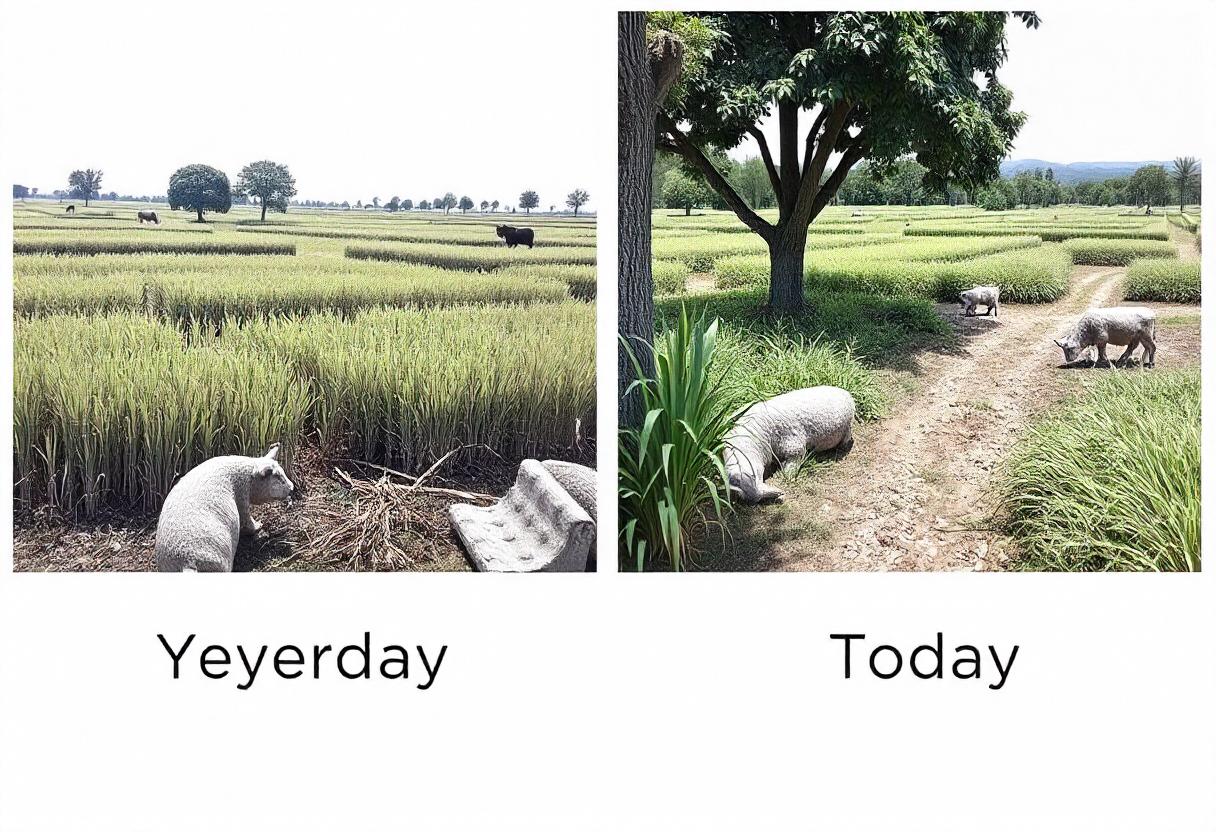
Agriculture Yesterday
Agriculture has been a cornerstone of human civilization for thousands of years, evolving significantly from its early beginnings to the modern era. Historically, agriculture was characterized by rudimentary practices and relied heavily on manual labor and natural processes.
Early Agricultural Practices
In ancient times, agriculture began with the domestication of plants and animals. Early farmers practiced subsistence farming, growing just enough food to meet their immediate needs. Crops such as wheat, barley, and legumes were cultivated in small plots, and domesticated animals like cattle, sheep, and goats provided meat, milk, and labor.
Tools and Techniques
Early agricultural tools were simple and often made from wood, stone, or bone. The plow, an essential tool for tilling soil, was first developed around 3000 BC, but it was a basic wooden implement with limited effectiveness. Irrigation techniques were rudimentary, relying on natural water sources and manual diversion of water to crops.
Agricultural Societies
Agricultural societies began to form as farming practices became more established. Communities started to specialize in different aspects of agriculture, such as crop production or animal husbandry. This specialization led to the development of early trade systems, where surplus produce was exchanged for other goods and services.
Agriculture Today
Modern agriculture is vastly different from its historical roots, driven by technological advancements, scientific research, and increased efficiency. Today’s agriculture is characterized by sophisticated techniques and a focus on sustainability and productivity.
Technological Innovations
The advent of technology has revolutionized agriculture. Modern farmers use advanced machinery, such as tractors, combines, and precision farming equipment, to manage large-scale farms with greater efficiency. Innovations like GPS-guided systems and drones help in monitoring crop health, optimizing resource use, and improving yield predictions.
Scientific Advances
Scientific research has played a crucial role in transforming agriculture. Advances in genetics and biotechnology have led to the development of genetically modified crops that are resistant to pests, diseases, and environmental stresses. Improved seed varieties and soil management practices contribute to higher productivity and sustainability.
Sustainable Practices
Today’s agriculture focuses on sustainability and environmental stewardship. Practices such as crop rotation, conservation tillage, and organic farming aim to reduce soil erosion, conserve water, and minimize chemical use. Integrated pest management (IPM) strategies are employed to control pests with minimal environmental impact.
Globalization and Trade
Globalization has significantly impacted agriculture, with international trade playing a major role in food production and distribution. Farmers and agricultural businesses now operate in a global market, where they export and import products to and from various countries. This global network enhances food security and provides consumers with a diverse range of agricultural products.
Urban and Vertical Farming
With the growing urban population, innovative farming methods like urban and vertical farming have emerged. These practices involve growing crops in city environments, often using hydroponic or aeroponic systems in vertical structures. These methods address land scarcity and reduce the carbon footprint associated with transporting food from rural areas.
Changing Workforce
The agricultural workforce has also evolved. While early agriculture relied heavily on manual labor, modern farming is increasingly automated and requires specialized skills. Agricultural engineers, data analysts, and environmental scientists now play key roles in managing and optimizing agricultural operations.
Policy and Regulation
Agricultural policies and regulations have become more complex, addressing issues such as food safety, environmental protection, and labor rights. Governments and international organizations work to establish standards and practices that support sustainable agriculture and ensure food security.